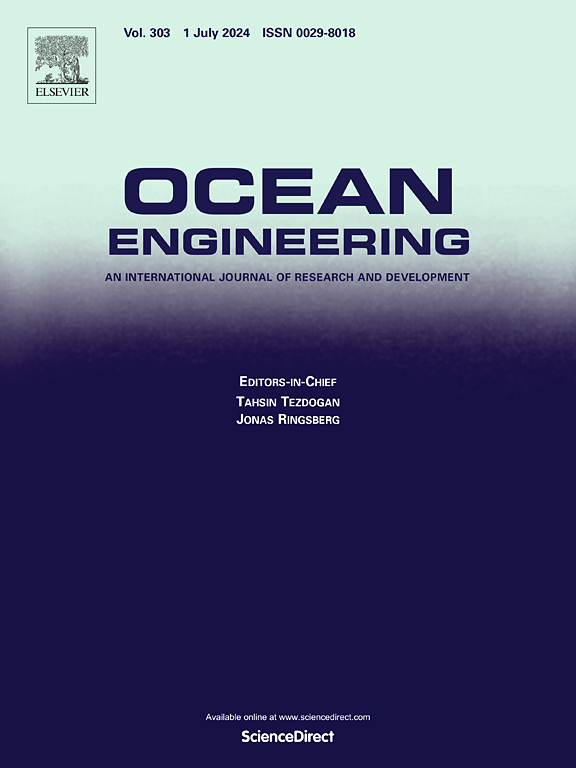Performance analysis of the passive heave compensation system for dual barge float-over operation
IF 4.6
2区 工程技术
Q1 ENGINEERING, CIVIL
引用次数: 0
Abstract
The dual barge float-over technique, incorporating a passive heave compensation (PHC) system, presents an efficient solution to the challenges posed by the installation of increasingly larger offshore structures. Despite its potential, the efficiency of the PHC system in reducing motions and its influence on the multi-body dynamic characteristics of the dual barge float-over system remain insufficiently explored. In this study, a comprehensive analysis of the PHC system's performance in dual barge float-over installation of a substation was conducted. A numerical model of the system was established in both the frequency and time domains. The motion properties of the multibody system were analyzed under varying gas volumes and damping coefficients in the frequency domain. The results indicate that while the PHC system reduces substation's motion amplitudes around the primary frequencies, it simultaneously induces secondary resonant motions with larger amplitudes in the low-frequency range. However, the time domain simulation based on the North Sea wave scatter diagram data reveals that the influence of these secondary resonant motions on the overall performance of the PHC system is negligible. The analysis proves that the PHC system significantly enhances the dual barge float-over technique's operability, particularly in beam waves and at high wave heights.
求助全文
约1分钟内获得全文
求助全文
来源期刊

Ocean Engineering
工程技术-工程:大洋
CiteScore
7.30
自引率
34.00%
发文量
2379
审稿时长
8.1 months
期刊介绍:
Ocean Engineering provides a medium for the publication of original research and development work in the field of ocean engineering. Ocean Engineering seeks papers in the following topics.
 求助内容:
求助内容: 应助结果提醒方式:
应助结果提醒方式:


